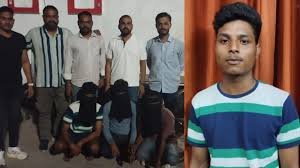
Unpacking Yati Narsinghanand’s Hate Speech: Protests and Legal Actions Across India

Yati Narsinghanand Saraswati, a controversial Hindu priest and mahant of the Dasna Devi Temple in Ghaziabad, has recently sparked significant outrage following his derogatory remarks about Prophet Muhammad. This incident has led to widespread protests and legal actions across various states in India.
Background of the Controversy

On September 29, 2024, during an event at Hindi Bhavan in Ghaziabad, Narsinghanand allegedly made inflammatory remarks that offended the Muslim community. A viral video capturing these comments prompted immediate backlash. An FIR was lodged against him on October 4, 2024, under Section 302 of the Indian Penal Code for hurting religious sentiments.
Key Developments
- Detention: Following the uproar, Narsinghanand was detained by police in Ghaziabad on October 5, 2024. His detention came after protests erupted in multiple locations, including Ghaziabad and Jammu & Kashmir, where community members demanded strict action against him for blasphemy.
- Protests: The protests have been marked by significant participation from various groups. In Jammu and Kashmir, the Muttahida Majlis Ulema (MMU), an alliance of Muslim organizations, condemned Narsinghanand’s statements as an attempt to incite communal violence. They called for his immediate arrest and emphasized that such remarks are unacceptable to all who respect religious figures.
- Political Reactions: Political leaders have also reacted strongly. Asaduddin Owaisi, president of the All India Majlis-e-Ittehadul Muslimeen (AIMIM), met with police officials in Hyderabad to demand action against Narsinghanand. He described the comments as “highly condemnable” and called for his arrest under various laws including the Unlawful Activities (Prevention) Act (UAPA) .
Community Impact

The incident has not only led to protests from the Muslim community but has also drawn support from other religious groups. Members of the Sikh community joined protests in Jammu, emphasizing the need for communal harmony and demanding accountability for hate speech. This cross-community solidarity highlights the broader implications of such inflammatory remarks on societal peace.
Legal Framework

The FIR against Narsinghanand is part of a larger context where hate speech laws in India are increasingly under scrutiny. The Supreme Court has directed states to take action against hate speech irrespective of the speaker’s religious affiliation. This case could set a precedent for how such matters are handled legally moving forward.
Conclusion
Yati Narsinghanand’s recent hate speech has ignited a firestorm of protests and legal actions across India, reflecting deep-seated communal tensions. As communities unite against hate speech, the legal outcomes will be closely watched to gauge their impact on future discourse and communal relations in India. The situation remains fluid, and further developments are expected as authorities continue to investigate and respond to public outcry.Stay tuned for updates as this story unfolds, highlighting the ongoing struggle between free speech and communal harmony in contemporary India.
Discover more from
Subscribe to get the latest posts sent to your email.







